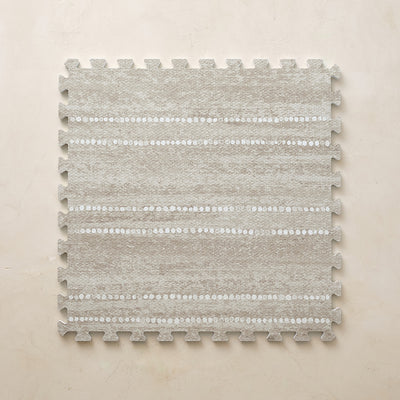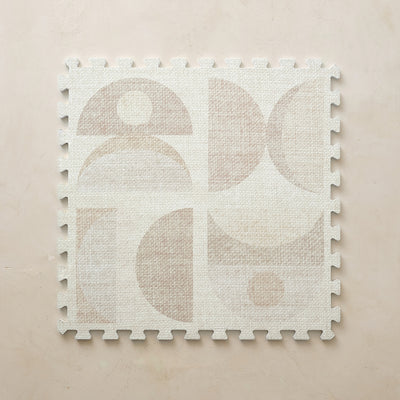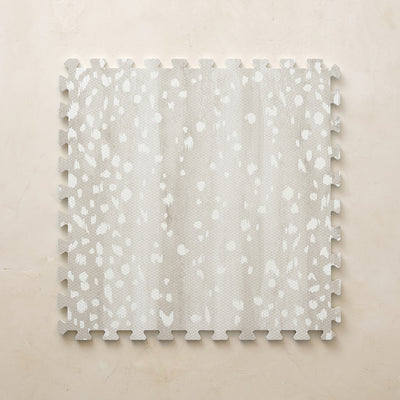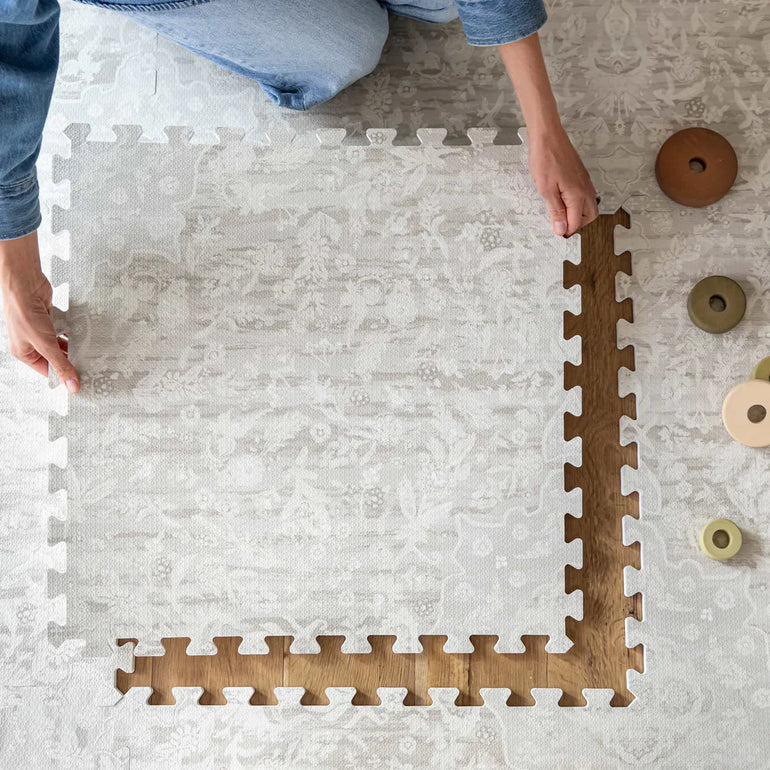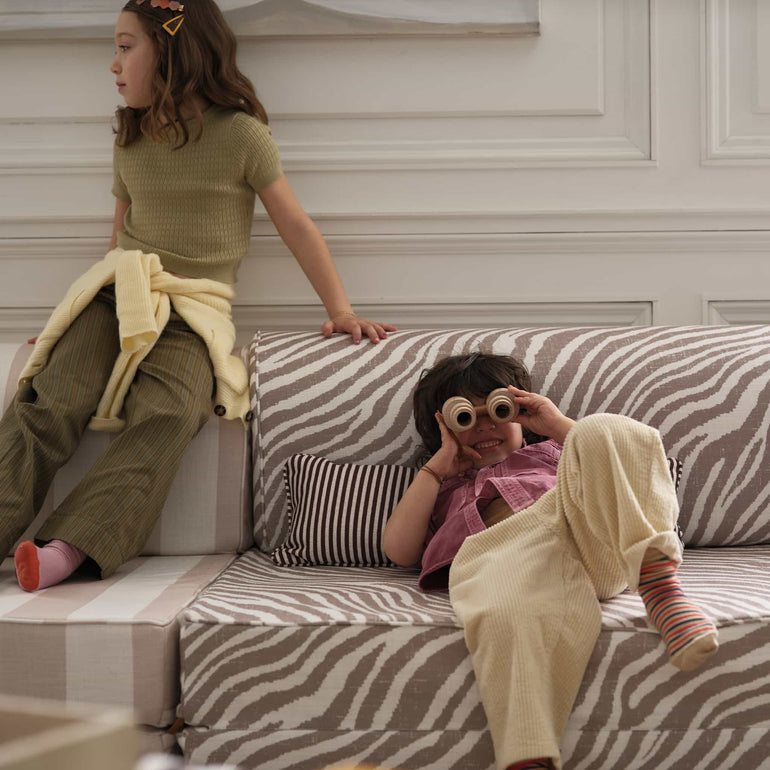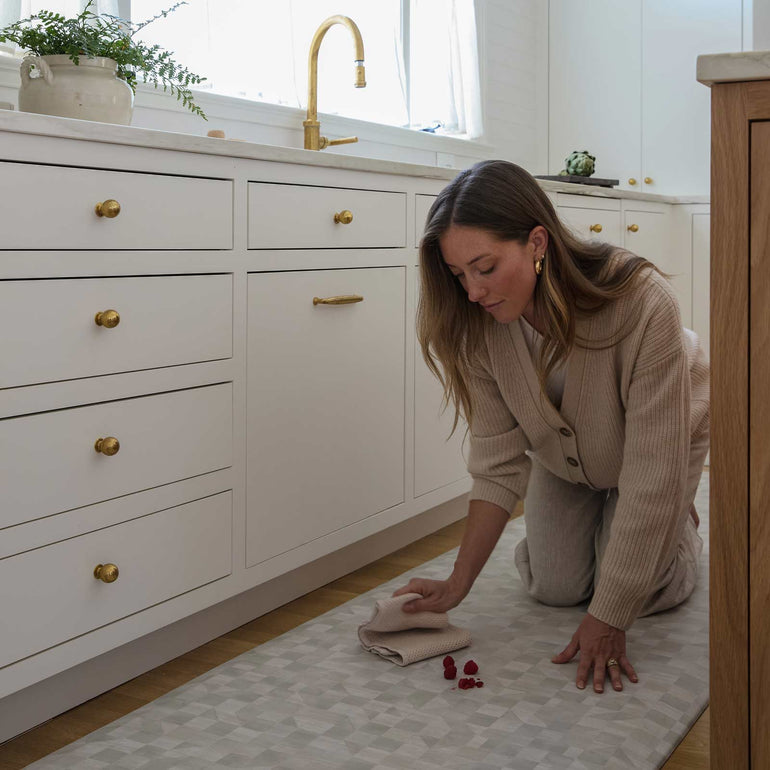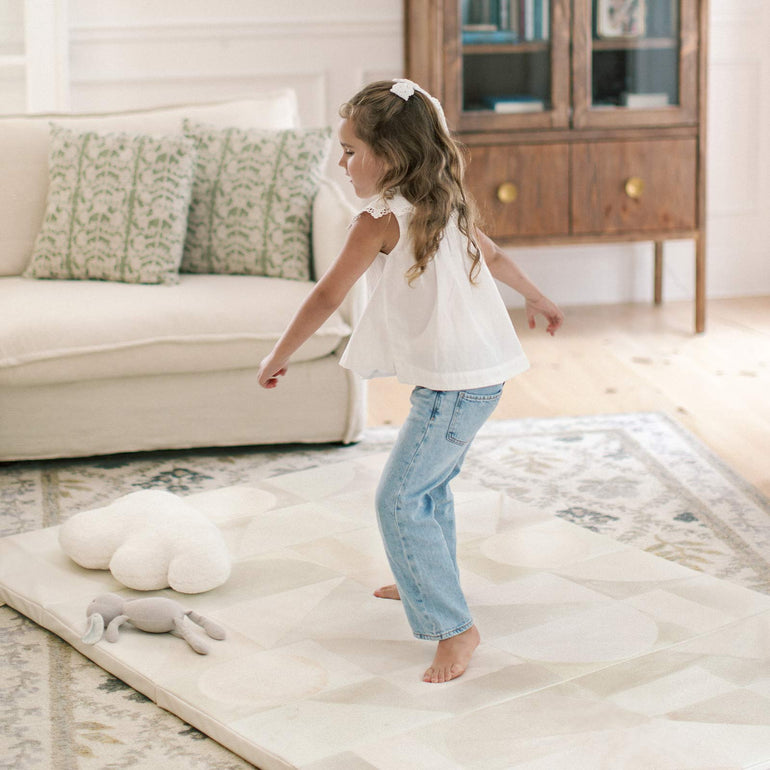
Welcoming a new baby into your life is one of the most joyful and transformative experiences. Designing their nursery is part of that journey, and it’s about so much more than cribs and curtains. A thoughtfully designed nursery can be a soft, stylish place for your family to grow, not just during the newborn months but for years to come. By focusing on versatile design, functional essentials, and personal touches, you can create a space that evolves seamlessly alongside your child and still feels like home at every stage.
In this guide, we'll walk through everything you need to know: what nursery essentials to have from day one, when to start setting up your space, and smart design strategies that make it easy for your nursery to grow with your family.
What Do You Need in a Nursery From Day One?
A newborn’s needs may be simple, but setting up a nursery that meets those needs, while also creating a calming, functional space, takes thoughtful planning. By choosing pieces that offer comfort, flexibility, and style from the beginning, you can set the foundation for a nursery that adapts beautifully as your child grows. Here’s what to prioritize from day one.
Nursery Essentials That Support Sleep and Soothing
A nursery is first and foremost a place of rest. Choosing elements that promote sleep and soothe both baby and parents is key to a nurturing environment:
-
Safe, comfortable sleep space: A crib or bassinet that meets the latest safety standards provides the secure foundation your baby needs. Look for adjustable mattress heights for easier transitions later.
-
Soft, layered lighting: Dimmable lamps or nightlights create a cozy atmosphere and make middle-of-the-night feedings gentler on everyone.
-
Sound support: A white noise machine can help mask household sounds and create a consistent sleep environment.
-
Essential textiles: Swaddle blankets, breathable crib sheets, and blackout curtains support better sleep cycles.
-
Changing essentials: A well-padded changing pad placed at a comfortable height prevents strain during countless diaper changes.
Organizing a Nursery for Daily Use
Beyond sleep, daily routines like feeding, changing, and playing demand smart organization from the start:
-
Accessible diapering station: Keep diapers, wipes, creams, and fresh clothes within easy reach to streamline late-night changes.
-
Feeding corner: A cozy chair paired with a small table for bottles, burp cloths, and water for you makes feeding times more comfortable.
-
Multi-purpose storage: Baskets and modular shelves help corral toys, books, and linens, and can be reconfigured as your child’s needs grow.
-
Soft surfaces for play: Modular furniture pieces offer a safe spot for supervised tummy time now, and independent play later.
Small, well-planned storage solutions, especially modular ones, help keep essentials close without cluttering your serene, soothing space.
When to Set Up the Nursery (and What to Expect)
There’s no universal “right time” to set up your baby’s nursery, it’s all about what works for your family’s pace and comfort level. Whether you’re someone who loves checking off a to-do list early or someone who thrives on flexibility, the key is creating a timeline that feels calm, achievable, and personal to you.
Creating a Calm and Flexible Timeline
Second trimester sweet spot
Many parents find that the second trimester, around 20 to 30 weeks, is an ideal time to start nursery planning. Energy levels often rebound during these months, making it easier to tackle furniture deliveries, assembly, and design decisions.
Third trimester finishing touches
There’s no need to rush everything at once. Save softer details like wall art, storage bins, and cozy textiles for later, when your style vision naturally sharpens as your due date approaches.
Plan for flexibility
Not everything needs to be picture-perfect before baby arrives. Focus first on must-haves, like a safe sleep space and changing station, and know that additional pieces, like play furniture or soft seating, can be layered in as needed.
Ease into what feels right
Designing your nursery should feel joyful, not pressured. A flexible, phased approach allows your family to adapt naturally, and often leads to more intentional, personalized spaces.
Designing a Nursery That Evolves With Your Family’s Needs
Your nursery doesn’t have to be a short-term setup. With a little intention, you can create a space that grows beautifully alongside your child, shifting from sleepless nights to playful mornings without a complete overhaul. It all starts with a design mindset focused on flexibility, style, and smart investments.
A Long-Term Approach to Color and Style
Choose a timeless base
Soft neutrals, muted earth tones, and gentle pastels create a calming foundation that works for a newborn — and still feels stylish well into toddlerhood. Think: warm oatmeals, soft sage greens, cozy stone blues.
Layer in changeable accents
Instead of committing to a full theme (like a cartoon or animal motif), add character with textiles and accessories that are easy to swap out: throw pillows, wall art, rugs.
Future-proof your big pieces
Opt for modular nursery furniture that grows with your child. Pieces like soft seating, adaptable storage, and play-ready mats can shift easily from nap times to story times, helping the room evolve without needing a full redesign.

Tips for Making the Room Feel Cozy and Functional
Design for multi-use spaces
Consider creating zones within the nursery, a sleeping area, a feeding nook, a soft corner for play. Modular furniture makes it easy to adapt these spaces as your baby grows into a toddler and beyond.
Think storage-smart
Low-profile baskets, adjustable shelving, and under-crib storage can minimize clutter and make everyday essentials easy to grab, even one-handed.
Prioritize comfort for you, too
A supportive rocker or modular lounger (like House of Noa’s soft furniture pieces) ensures you have a comfortable place to rest, feed, or snuggle — helping you stay connected to your child through every stage.
Small upgrades, big impact
Swapping out pillow covers, updating a rug, or adding a new piece of modular furniture can refresh the entire room without a major renovation.
Personal Touches That Make It Feel Like Home
While functionality and style set the foundation, it's the personal touches that truly make a nursery feel special. These small details turn a beautiful room into your family's sanctuary, a place full of memories, meaning, and heart.
Add sentimental details
Framed family photos, a handmade quilt, or a favorite storybook placed on a shelf can bring warmth and familiarity into the space. These pieces help connect the nursery to your family's history and future.
Incorporate meaningful art
Choose wall art that resonates with your values whether it’s a whimsical hand-illustrated print, an inspiring quote, or even your baby's own future masterpieces. Art doesn’t have to be elaborate to be meaningful.
Celebrate small milestones
Create a little space, like a memory shelf or a pinboard, to display items that grow over time: baby’s first shoes, birthday photos, or treasured mementos. This builds a living story within the nursery, reflecting how your family evolves.
Balance beauty with comfort
Layer soft rugs, cozy throws, and touchable textiles that invite relaxation and connection. Thoughtful details make the room feel welcoming not just for your baby but for every family member who steps inside.
Looking for pieces that combine comfort, beauty, and longevity? Explore House of Noa’s modular furniture collection designed to grow alongside your family while keeping your nursery effortlessly stylish.
